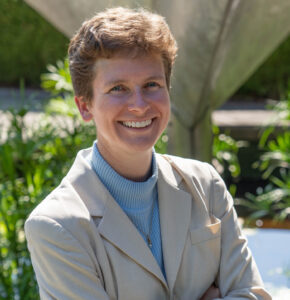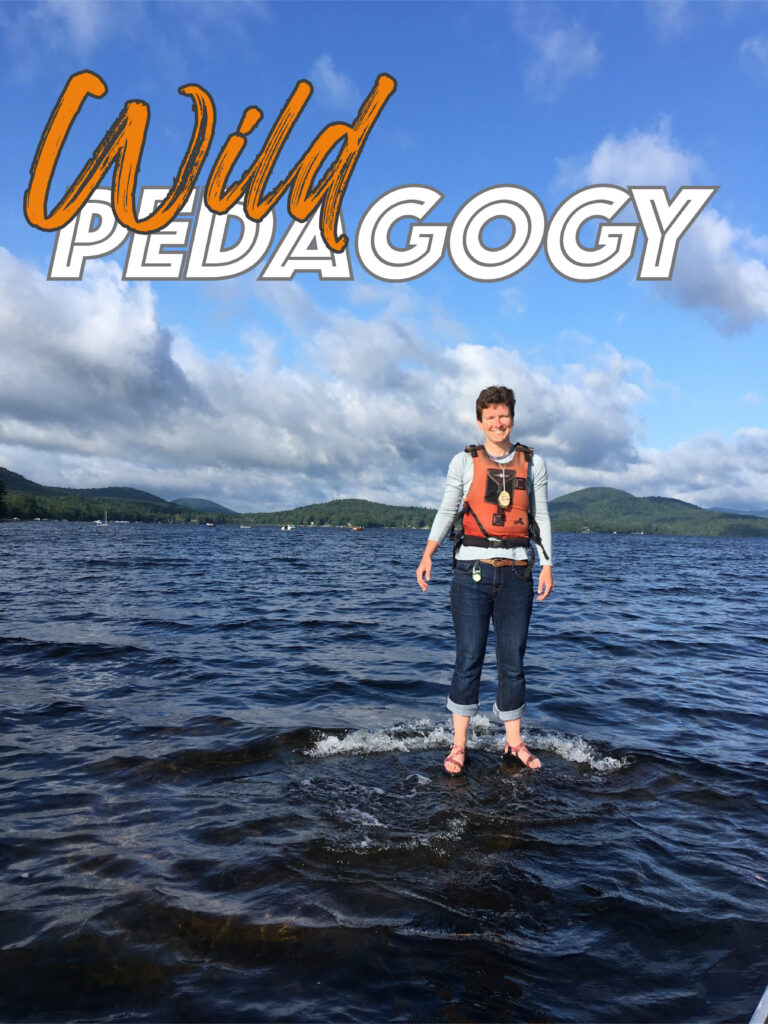
Wild Pedagogy
 My first sunburn of the year is always from teaching. I inherited my father’s skin, so it doesn’t take much sun for me to burst into flame, and that first warm day of spring I take all my classes outside, find a patch of grass to sit on, and hold lessons in fresh air for the first time in months. I usually forget to bring sunscreen. This year, because we had an unseasonably warm May, my Chaco tan was impressive before summer even began.
My first sunburn of the year is always from teaching. I inherited my father’s skin, so it doesn’t take much sun for me to burst into flame, and that first warm day of spring I take all my classes outside, find a patch of grass to sit on, and hold lessons in fresh air for the first time in months. I usually forget to bring sunscreen. This year, because we had an unseasonably warm May, my Chaco tan was impressive before summer even began.
Nice-day-outside classes are only the beginning. I hold office hours outside (a taped-up sign written in sharpie on my door tells students where to find me). I teach a 3-week immersion course in January or May called “Backpacking with the Saints” that includes a week of backpacking. At the request of one special class I taught a peripatetic lesson on the crusades in ten inches of snow, complete with “knight training camp” and deaths from dysentery. It’s even as simple as this: in the classroom I most prefer on campus—for its two walls of windows—I rely on the natural light and avoid turning on the fluorescents unless the day’s light is not cooperating. My wild pedagogy is a running joke-argument with my dean: I contend that class is simply better when nature is the classroom.
For me, it’s simple. I learned to teach primarily by working as a wilderness guide at a children’s camp, so teaching outside, or teaching with nature as part of my classroom, just makes sense. The first day I stood in front of students in a classroom as a grad student adjunct, I looked at the faces before me in the windowless room and realized, “I think they think I’m in charge.” The second day, I took them outside because we were talking about Genesis. It didn’t occur to me that someone could teach the creation story anywhere but outside. Sitting on the grass with my students, I realized, “I know how to do this. This is how I am a teacher.” Nine years later, sitting in a canyon with some students in January, I thought, “Yeah, this is where I am my best kind of teacher.”
So yes, my first reason for taking classes outside is simply that I like being out. I breathe better outdoors. I feel more myself outdoors. But the longer I do it, the more reasons I discover it’s a great choice pedagogically. Some of you are already with me; I’ll wave at you across the quad. If it’s more ideas for how to make nature the classroom you’re after, or ideas for immersive classes, stay tuned. Future blog posts will talk about those. This one is for those of you who are here because you know you love taking classes outside but haven’t thought about why it works so well, or you love it but need ways to talk about it with your skeptical colleagues. Or perhaps you are skeptical yourself. (If your skepticism is about how to make it work with student accommodations and opinions or technology use, look for my next blog in this series.)
So, hear me out: Why is wild pedagogy a good choice? Teaching seems more like a conversation outdoors. Students almost forget they are in class and actually talk with one another and with me, learning instead of worrying about whether something will be on the test. Students are less distracted—or at least distracted by better things. They reach for their phones less often. Outside, students feel like they’re getting away with something. I feel like I’m getting away with something. And when we feel like we’re getting away with something, we play more, which enlivens our discussions. Play also increases my students’ creativity, which they need as they work to understand the mysteries of God and human lives. Life feels more possible when we’re sitting in the sunshine feeling the breeze rustle our hair, and therefore my students feel that the work of learning is more possible, if only for an hour. Finally, that the world is wild and alive expands my teaching and the students’ conversations. We are all more alive as our spirits encounter the breath of the world. My teaching becomes more wild as I am in the wild world. More attentive, more responsive, more active, more unpredictable in the best ways.
I invite you to ponder with me in this series all of these reasons for wild-ing pedagogy. I’ll be here every other month with a discussion of one of these reasons and how it plays out in actual classes. I’ll share some successful ideas and some failures. I’ll tell stories of canoeing with students and how they learn things in that setting that are hard to replicate anywhere else. Come join me around the campfire. I’ll save you a s’more.
Leave a Reply